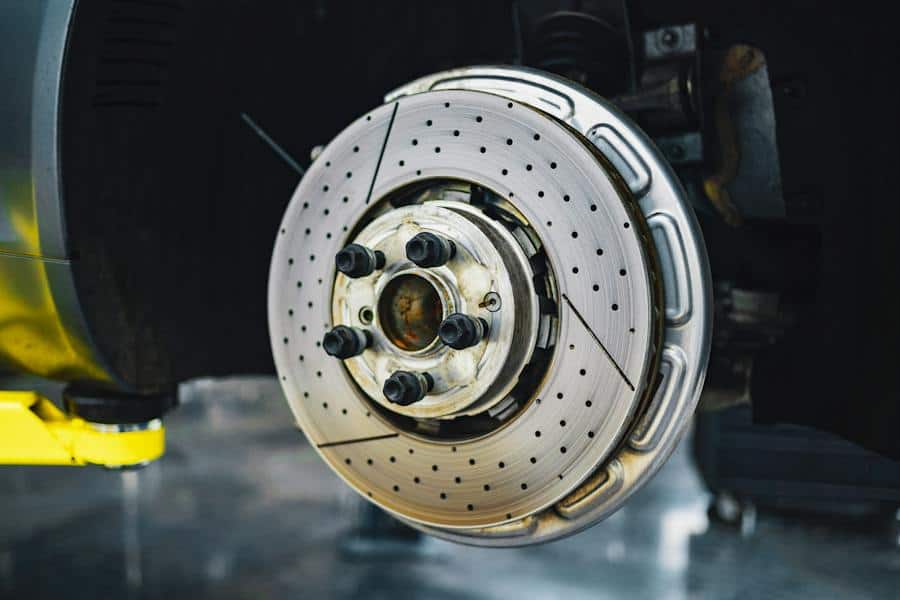
Getting your Commercial Driver’s License (CDL) in Ontario, Canada, can be quite an exciting journey. However, it does come with its fair share of challenges.
One significant challenge on this path is the air brake test. The test is a requirement for those who want to operate commercial vehicles with air brake systems.
If you’ve signed up to take this test, you’ll find resources to help you prepare here.
For the purpose of this article, we’ll be delving into the nitty-gritty details of what you should know before taking on Ontario air brake test. We’ll be as comprehensive as possible to ensure you get all the information you need.
Why Air Brake Endorsement Matters
Before we dive into the specifics, let’s understand why the air brake endorsement is such a big deal in Ontario. Air brakes are like the superheroes of braking systems. They offer intense stopping power and reliability for the vehicle. This ability has helped drivers avoid accidents that could have been fatal countless times.
But, like the saying goes, with great power comes great responsibility. For this reason, Ontario mandates an air brake endorsement to ensure that drivers can handle the advanced braking system safely.
The Levels Of Air Brake Endorsements
In Ontario, there are two levels of air brake endorsements:
Z Endorsement (Air Brake Knowledge Test)
This is your basic ticket to operating vehicles with air brakes. It’s all about passing the Air Brake Knowledge Test, which is more about what’s in your head than under the hood.
DZ Endorsement (Air Brake Practical Test)
If you’re planning to drive big rigs (usually Class B and above), the DZ endorsement is what you’ll need. It’s a combo deal that tests both your knowledge and your hands-on skills.

Mastering The Air Brake Knowledge Test
The Air Brake Knowledge Test is your first step toward the Z endorsement in Ontario. It’s a written test, so you don’t have to get your hands dirty, just your brain. Here are the key areas to focus on:
- Air Brake Components: Get familiar with the various parts, from air compressors to brake chambers. You don’t need to name them in your sleep, but then you have to be able to tell what’s what.
- Operation and Maintenance: Learning how air brakes work and how to give them a check-up shows your commitment to the art of driving them. You’ll surely encounter hurdles during your driving, and sometimes there may not be a professional mechanic to sort out your issues.
When such a situation arises, you must be fully ready to step up and take charge. Invest your time and dedication to learning how to keep these vehicles in tip-top shape.
- Emergency Procedures: Air brake systems encounter failure sometimes, and when they do, your best chance at safety is performing the emergency procedures. You must have a handy knowledge of what to do when emergencies occur. This is the only way to keep yourself and other road users safe.
- Regulations: Ontario has a set of unique road rules regarding air brake systems. Familiarize yourself with these rules so you don’t risk fines, tickets, or even jail time.
- Hands on training: While the Air Brake Knowledge Test is all about what’s on paper, practical training is equally vital, especially for those going after the DZ endorsement.
Be ready to get your hands dirty, or at least a little greasy, as you learn to work with air brake systems. During this time, you’ll master how to adjust them and troubleshoot common problems that may arise while you’re en route.

Where To Find The Right Resources
The Air Brake Handbook from the Ontario Ministry of Transportation is your bible for the knowledge test. In this handbook, you’ll find all the good stuff that’ll help get you prepared for your CDL exam.
You can also find practice tests online. You should check for tests from regulated government bodies or recognized driving centres. These are the best sources to get practice tests that are legit, Ontario-specific, and up-to-date.
Tips For Taking and Passing The Practical Test
If you’ve signed up for the DZ endorsement, you should know that the knowledge test is not the only thing you’ll be facing. There’s a practical test in the mix to test your ability to inspect air brake systems, spot defects, and make adjustments. Here are some tips to keep you in the loop, and we’ll prepare for the procedure:
Do thorough Inspection
Get the hang of a step-by-step air brake system inspection. This often involves checking every nook and cranny of the system. You should also measure pushrod travel so you can ensure that all adjustments are in the green zone.
Learn how to spot defects
Finding the issue can be a challenging process, especially for heavy vehicles.
You need to be sharp at identifying problems like air leaks, contaminated brake fluids, or worn-out components so you can fix them before they exacerbate.
Fine tune your skills
In the practical test, you’ll be asked to show your skills. Most examiners will likely start by asking you to make brake adjustments, like tinkering with slack adjusters, to maintain a perfect brake balance.
To pass this phase, you’ll need to show your assessment officer that you possess all the skills of a professional commercial driver. Invest time and effort into fine-tuning your skills so you can impress your examiner during the practice exam.
Get as much practical training as possible
Practical training can’t be stressed enough. It’s where you apply what you’ve learned. Consider enrolling in a professional driver training program that specializes in air brake systems to make sure you’re in top shape for the practical test.
Wait for the outcome
If the air brake test doesn’t go your way, you might have to wait a bit before trying again. The waiting period varies in different provinces, so check with your local licensing authority to verify yours.
There will be retake fees for both the Air Brake Knowledge Test and the practical test. Keep this in mind while you wait for your second chance.
Wrapping Up
In a nutshell, getting to know the Ontario air brake test is a must for aspiring commercial drivers. The air brake endorsement isn’t just a legal requirement; it’s a ticket to safely operating vehicles with these powerhouse braking systems.
So, hit the books, get your hands dirty, and maybe even consider some professional training. The air brake test might be a hurdle, but it’s also a gateway to a promising career in the world of commercial driving.




















